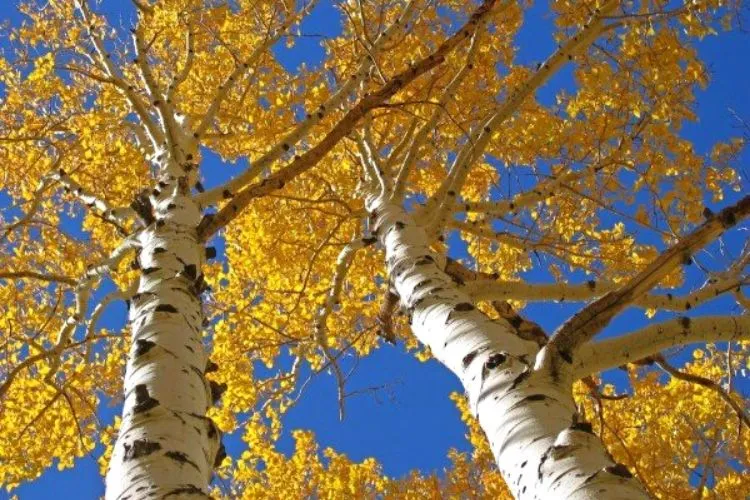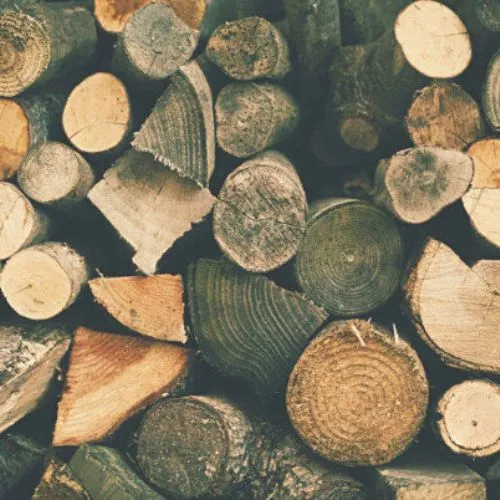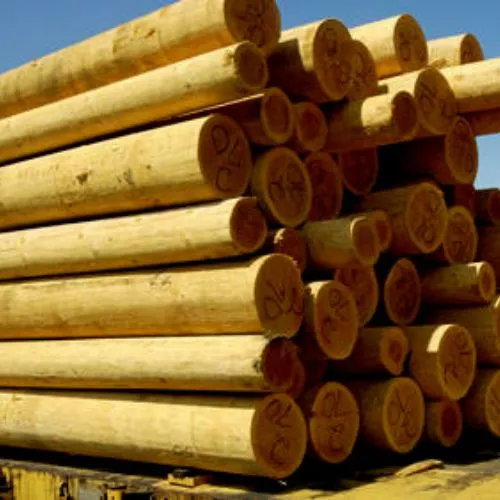Let’s look at the three main crucial characteristics you must look into in firewood before answering “is aspen a good firewood?”
- Smoke: You must use wood that does not produce a lot of smoke. The last thing you need is a smoggy home.
- Toxic Fumes: The smoke must also be clear of any potentially dangerous lung-scorching gases. As a result, avoid certain types of timber as firewood.
- Chimneys with Backup: The smoke due to burning the firewood must be substantially pitch-free. It helps to prevent your chimney from getting clogged with that pitch. It may result in increasing the chances of a chimney fire.
Considering these points, ensure you have logs having zero or no moisture. It will help to produce less smoke. In addition, avoid the usage of wood from a poisonous tree, e.g., the Yew tree. Wood from trees with the least sap or pitch is the best bet.

Is Aspen a good firewood?
Let us understand if Aspen suffices to your requirements for good firewood. Aspen is not poisonous, and its timber is known to have less sap or pitch. The aspen wood will not produce a lot of smoke once seasoned and dried.
From that perspective yes aspen is a good firewood.
The downside of Aspen is about having a low density. It results in the timber not burning for a substantial time, as the flames burn the wood quickly.
If you want to warm up your home or heat wood store, you will need firewood that burns longer. Aspen is not a wood that will burn longer. Aspen can help you to ignite and can help you to put on a fire.
One disadvantage of Aspen is that it might decay if not protected appropriately after drying. Keep Aspen under a cover in a well-protected location. Also, make sure it’s off the ground. Else, moisture will accumulate, and it will decay.
Because Aspen rots effortlessly, some individuals prefer to chip their logs and burn them. They believe drying them as chips will dry faster and keep them dry longer than drying them as logs.
Aspen is considered a hardwood despite its low density. It generates 16.5 BTU (British Thermal Unit) of heat, which is substantial to produce fire. If you are looking for a small-time fire for a couple of hours, Aspen suffices for your need. Since Aspen produces low smoke and is not poisonous, you can use it as fine firewood.
How long does it take Aspen to dry?
Aspen dries quickly due to its low density, moisture, and sap content. The wood completely dries within 6 to 12 months before you use it as firewood. This period is comparatively quicker than other high-density hardwoods that take years to dry completely.
What can you use aspen wood for?
Apart from using Aspen as firewood, its wood is used in other segments too.
Sawn Products
- Boards
- Dimension Lumbar
- Timbers
- Studs
- Pallets
- Boxes and Crates
- Paneling
- Furniture
- Toys
- Lumber core
- Redwood substitute
- Products used in mines, such as cribbing, caps, wedges, etc.
Veneer and Plywood
- Containers.
- Matchsticks.
- Chopsticks.
You May Also Find Useful: Is Silver Maple Good Firewood? | Is Spruce Good Firewood?
Can you burn Aspen on a wood stove?
As Aspen is low-smoke, non-sparky firewood, it’s safe to burn Aspen on a wood stove. You can use Aspen inside and outside your house and burn it in a fire pit or campfire.
You can also burn inside in a fireplace or wood-burning oven. Once seasoned, Aspen does not emit smoke in high proportions. Aspen also produces excellent coals.
What is the best firewood?
Although all wood burns, not all wood burns similarly. Compared to others, some burn hotter, slower, and cleaner. Some have a lot of sap or resin and produce a lot of smoke, which can easily clog your chimney.
The best firewood for a wood stove or fireplace burns hot and steadily, generating more heat and, usually, burning more completely. These woods are often hardwoods, like hickory or ash, as opposed to softwoods, like pine and cedar.
Hardwoods
The hottest and longest burn times are also found in hardwoods. They also frequently have the least sap and pitch content and are simpler to work with.
However, they may leave behind wood splinters, a rocky and solid residue, in the ash. When burning birch firewood, take care to avoid the phloem, a form of thick, brown bark at the inner side of the tree.

The bark has a tendency to absorb moisture at a higher rate, that results in irrgular drying of the wood. Combining birch with another timber is recommended for a cleaner burn and less smoke.
Softwoods
The least expensive kind of wood is softwood. The finest option is fir, while other softwoods such as pine, balsam, spruce, cedar, tamarack, alder, and poplar are also available.
Softwoods typically burn more quickly and produce finer ash than hardwoods. Particularly pine, spruce, and balsam can be hard to manage since they speed up the buildup of creosote in your chimney.

Conclusion
Easy availability, quick seasons, and less production of creosote make Aspen a preferred source of kindling. Many people choose it over pine, which is a common kindling wood.
As Aspen produces half of the heat generated from the best hardwoods, it shouldn’t be considered a primary fuel source. Aspen is prone to rust if not stored appropriately. Aspen wood is used in several applications, in addition, to being used as firewood.


